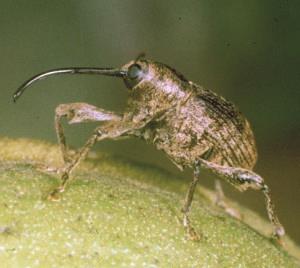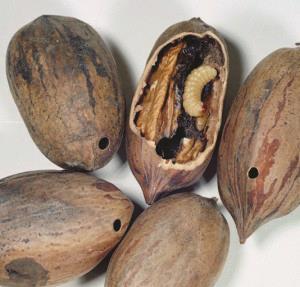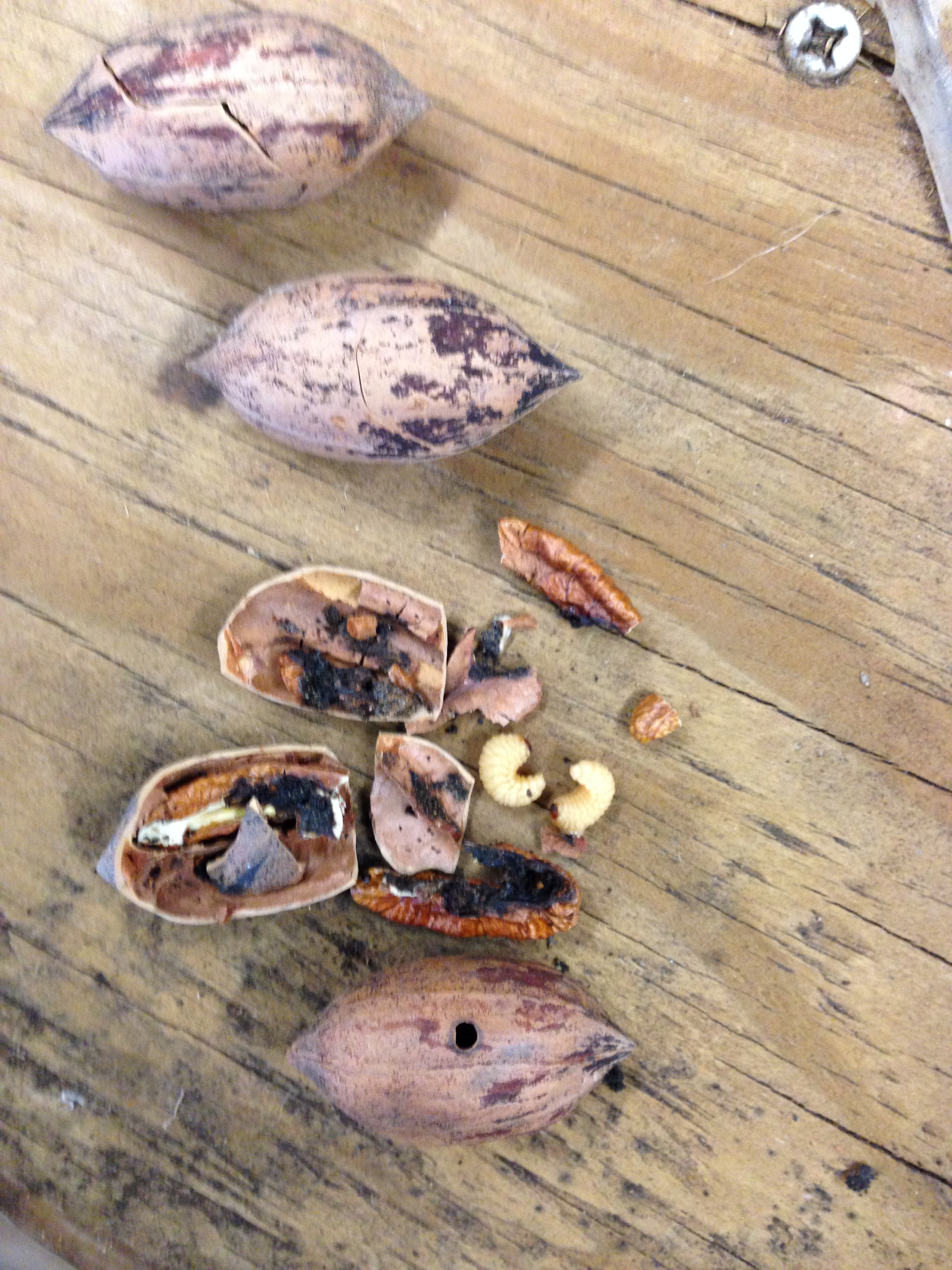Insect Gallery
Insect Details
Pecan Weevil
Curculio caryae
The pecan weevil exhibits four life stages: egg, larva, pupa and adult. When fully grown, pecan weevil grubs have a creamy white body that is about ¾ inch long with a reddish-brown head capsule. The pupal stage of the pecan weevil is a whitish, mummified-looking version of the adult. The adult pecan weevil is a light-brown to grayish snout beetle, measuring about ½ inch in body length. The snout of male pecan weevils is about half the length of the female’s, and curves primarily at the tip. Antennae of the male also appear to attach to the snout half the distance from the face. Female pecan weevils possess a longer snout, which curves gradually. Antennae of the female pecan weevil attach to the snout about 1/3 the distance from the face.
Pecan weevils usually lay eggs in pecan when the fruit is at dough stage. The eggs are generally deposited on the distal end of maturing pecan, where development of the seed embryo and cotyledon begin. Egg hatch occurs within 6 to 14 days after deposition. Pecan weevils exhibit four larval instars; however, while the first three average approximately 13 days each in duration, the final instar may feed for five to nine days, but will spend from one to two years in the soil, without feeding. Most larvae penetrate the soil to a depth of six to nine inches. Once they have reached their final resting depth, larvae will construct a hard, almost impenetrable earthen cell, where they will remain until they emerge. About 90 percent of the larvae that enter the soil the first year after feeding on pecans spend one year in the soil before pupating. The remaining 10 percent will not pupate until the following year. This makes the total time from first entering the soil as larvae to exiting as adults approximately two or three years. Two important events dictate the timing of pecan weevil emergence and damage on pecan including rainfall and nut maturity. In Oklahoma, peak emergence of weevils generally occurs from late August to mid-September; however, this timing can occur earlier or later depending on soil moisture. Typically, weevil emergence increases three to four days after a 1 to 2 inch rainfall. Soil moisture alone does not dictate weevil emergence. Another important cue is nut maturity. While the pecan weevil cannot sense nut maturity from beneath the soils surface, this timing has been fixed through years of selection. The average longevity of adult weevils is generally between 15 to 30 days. Generally, female pecan weevils live longer than males and those that emerge early in the season live longer than those that emerge later.
The female weevil chews a hole through the pecan shuck, withdraws her snout, turns around and probes through the hole with her ovipositor until she reaches the shell. The female weevil must grip tightly onto the shuck and rotate around the initial penetration site. This process creates tracking marks on the shuck. After feeding within a nut, larvae will chew exit holes about 1/8 of an inch in diameter in the shell, emerge from the nuts, and drop to the ground. After emergence from the soil, pecan weevils enter the tree by either crawling up the tree trunk or flying directly to the canopy or trunk. Pecan weevils cause different kinds of damage, depending on the stage of fruit development at the time of attack: Dropped and punctured nuts, larval feeding within partially matured nuts, and ovipositional damage.



